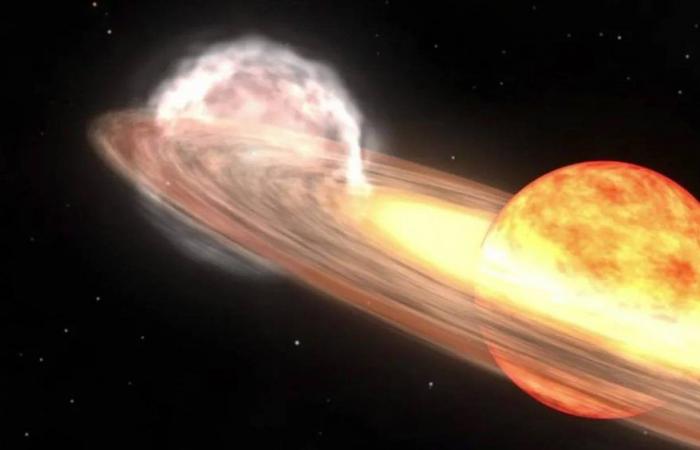NASA announced a “once in a lifetime” astronomical event which will be visible around the world this summer. It is a “nova” in the small constellation of Corona Borealis, which, according to specialists, will attract the new generation of astronomers.
In a press release, NASA indicated that the exact date of the phenomenon is unknown, but it will occur between summer and autumn. Dr. Rebekah Hounsell, a researcher at the space agency, highlighted that it will be “a once-in-a-lifetime event that will create many new astronomers, giving young people a cosmic event that they can observe, ask their own questions and collect data.”
The event will focus on the star Blaze, a binary system located about 3,000 light years from Earth. It is composed of a white dwarf, a stellar remnant the size of Earth but with a mass similar to that of the Sun, and an ancient red giant that loses its hydrogen due to the gravitational pull of the white dwarf.
“The accumulation of hydrogen on the surface of the white dwarf generates pressure and heat, eventually causing a thermonuclear explosion,” Hounsell explained. This phenomenon occurs approximately every 80 years in this system.
Dr. Hounsell stressed that A nova should not be confused with a supernova. which is a much more destructive explosion. In a nova, the dwarf star remains intact, ejecting material in a blinding flash.
The T CrB nova, as this event is called, was first observed in 1217 in Germany and the last time in 1946. The next event is expected to occur in September 2024.
The star Blaze will shine brightly in the Corona Borealis constellation, offering a once-in-a-lifetime spectacle. It can be seen with the naked eye.
To observe this phenomenon, it is recommended to look for the constellation Corona Borealis, a horseshoe-shaped curve of stars west of the Hercules constellation. It can be identified between the stars Arcturus and Vega. No telescope is needed as it will be visible to the naked eye.
Although there is a lot of expectation, the event may not be visible in September. “Recurring novae are unpredictable,” said Koji Mukai, an astrophysics researcher at NASA. “We’ll see how T CrB behaves,” he added.
*The creation of this content was assisted by artificial intelligence. The information was provided and reviewed by a journalist to ensure accuracy. The content was not generated automatically.


